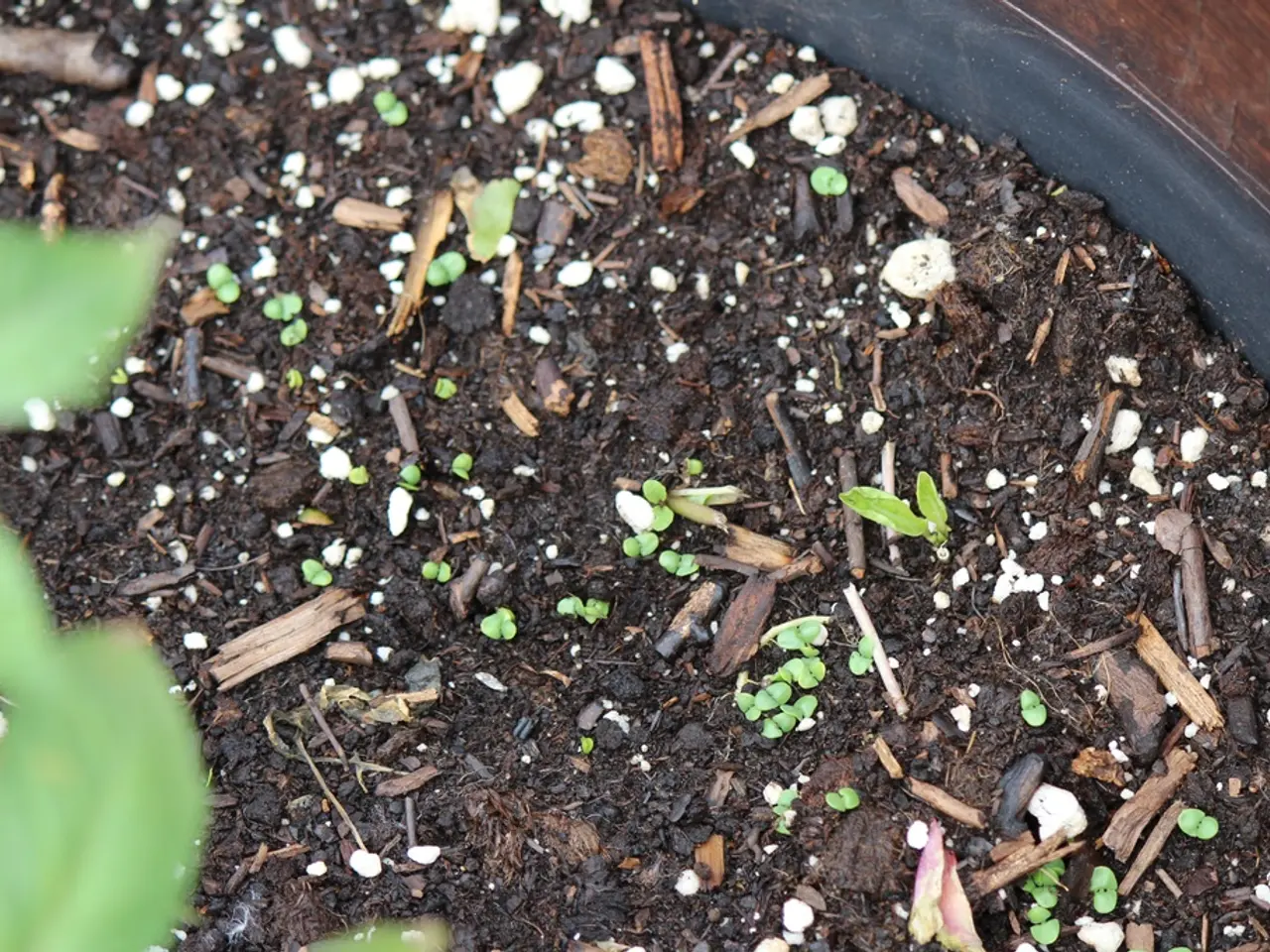Essential Techniques Uncovered: Assessing Soil Quality and Testing Techniques
In the ever-evolving field of agriculture, understanding soil health is crucial for sustainable farming practices. This article explores the top 10 methods for soil health assessment and testing, based on current technologies and practices.
1. Traditional Laboratory Wet Chemistry
This classic method analyses pH, nitrogen (N), phosphorus (P), potassium (K), micronutrients, and organic matter using reagents in a lab. With an accuracy of 98-99%, it takes 24-48 hours and costs between $30-75 per sample, making it suitable for all scales, including research and precision farming.
2. Portable Near-Infrared Spectroscopy (NIRS) Analyzers
These digital devices offer rapid testing of pH, NPK, moisture, organic matter, cation exchange capacity (CEC), and micronutrients, providing quick on-site data. With an accuracy of 92-97%, they are highly suitable for farms and consultants requiring immediate results.
3. IoT Smart Soil Sensor Networks
Sensor arrays measure moisture, pH, electrical conductivity (EC), temperature, and sometimes nutrients in real-time. With an accuracy of 90-95%, they are ideal for large farms and ongoing management, offering continuous monitoring at varying costs.
4. Satellite-Based Soil Analysis
Using multispectral satellite imagery and AI, this method estimates soil moisture, texture, organic carbon, and health indices. With an accuracy of 85-92%, it provides fast cloud-based results at a subscription cost of around $50 per month, making it suitable for large-scale and regional agricultural planning.
5. DNA-Based Microbial Assessment
Sequencing-based tests profile soil microbial diversity, detect pathogens, and beneficial microbes. With an accuracy of 96-99%, it takes 48-72 hours and costs between $80-200 per sample, making it useful in advanced soil health and disease management.
6. Colorimetric Test Strips (DIY Kits)
These manual, inexpensive methods offer quick estimation of pH and basic nutrients (N, P, K). With an accuracy of 70-80%, results are available within minutes, making them best for home gardeners and hobbyists.
7. Zone Soil Sampling
Dividing fields into zones based on soil type or crop maps improves precision nutrient management.
8. Soil Nutrient Testing via Extractants
Chemical extraction followed by lab analysis helps determine precise nutrient levels (macro- and micronutrients) to guide fertilization.
9. Soil Acidity and pH Testing
Measuring hydrogen ion concentration to adjust soil pH, optimize nutrient availability, and decide lime or sulfur application rates is essential.
10. Physical Soil Property Tests
Measuring soil texture, structure, moisture retention, and bulk density inform irrigation and cultivation practices.
These cutting-edge and traditional soil testing methods create a comprehensive toolkit that empowers farmers and gardeners to optimize soil quality, increase productivity, reduce costs, and promote environmental sustainability.
The Benefits of Soil Testing and Assessment
- Informed nutrient management: Knowing exact levels of N, P, K, micronutrients, and pH enables timely, precise fertilization, preventing over or under-application that can harm crops or the environment.
- Soil health monitoring: Microbial assessments and organic matter analysis detect soil biological activity crucial for fertility and disease resistance.
- Water management: Soil moisture sensors and satellite data inform irrigation scheduling to conserve water resources.
- Crop suitability: Testing for texture and pH helps match crops or native species best adapted to current soil conditions, improving yields.
- Real-time decision-making: Advances like IoT sensors and portable devices provide instant data to adjust practices dynamically.
- Long-term soil stewardship: Regular monitoring supports sustainable practices that maintain or improve soil qualities over time.
Note: Costs, accuracy, and suitability vary, so users should select methods fitting their scale, budget, and specific informational needs.
Additional methods not covered in this article include Soil Trim Test, Particle Size Analysis, Soil Respiration Tests, Microbial Biomass Tests, Bulk Density Testing, and Electrical Conductivity (EC) Test. Best practices for soil sampling include using sterile devices, accumulating test models at solid depths, combining samples to create a composite model, labeling and documenting each sample, and standard soil assessment before planting or during a meeting to check long-term changes in soil performance.
In the realm of sustainable agriculture, soil testing and assessment methods play a significant role in promoting environmental sustainability. These methods, ranging from traditional laboratory techniques to cutting-edge satellite-based analysis, help farmers optimize soil quality, increase productivity, and conserve water resources. For instance, water management can be enhanced through soil moisture sensors and satellite data, enabling efficient irrigation scheduling. Moreover, adopting a lifestyle that includes home gardening serves as a means to practice and learn about sustainable soil management in one's own home-and-garden setting.




